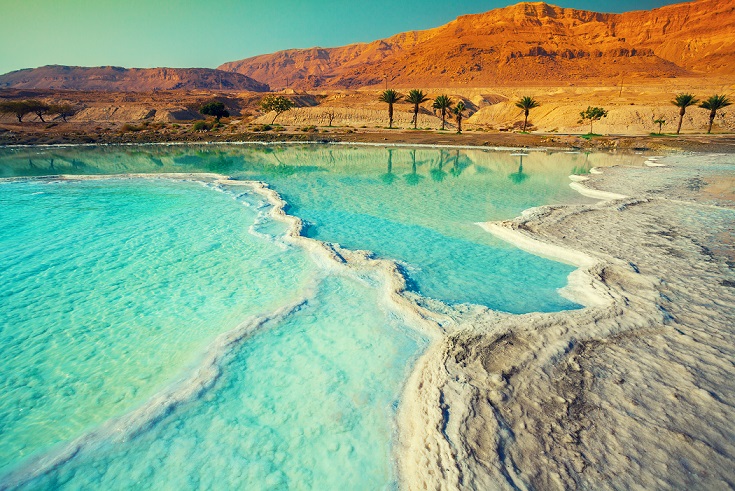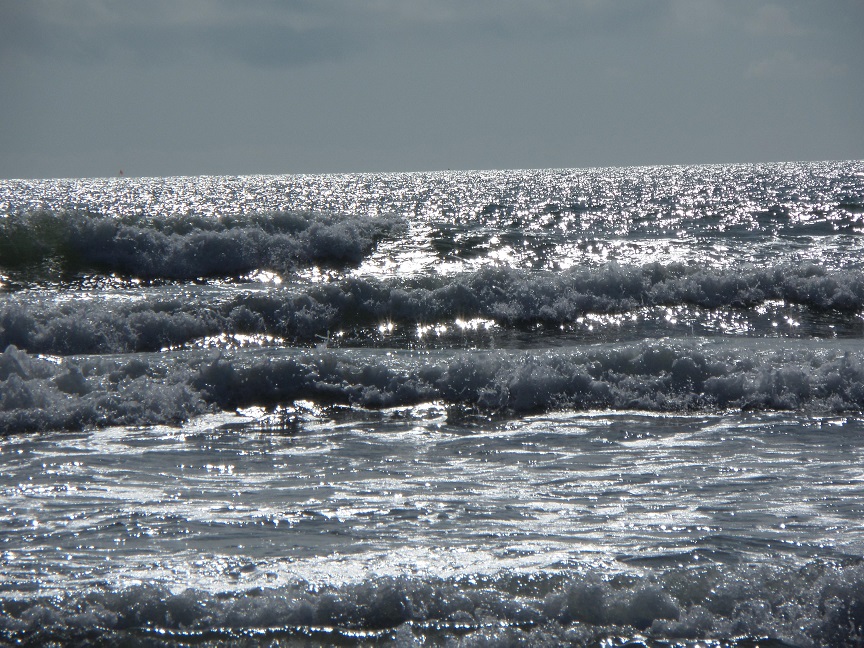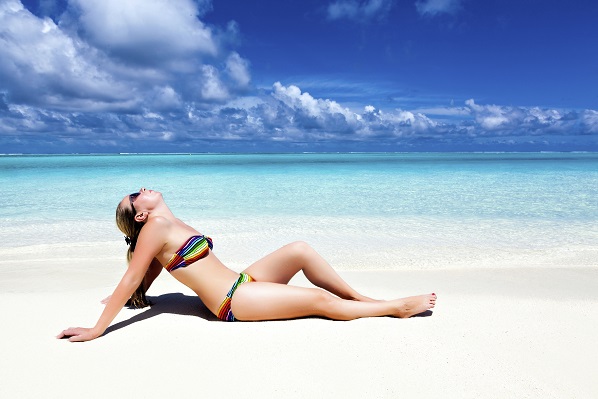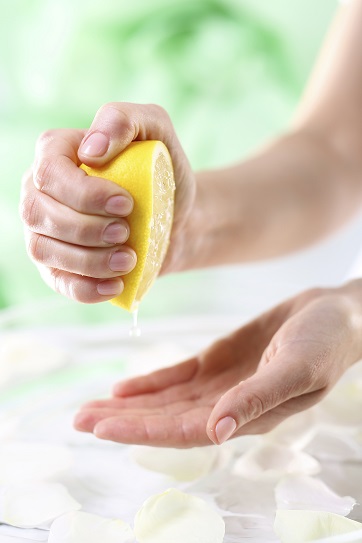 Sea salt is one of the most popular home remedies for acne in existence. It’s a healthy food, in comparison to table salt. It’s a natural food, since all commercial sea salt is sourced from either today’s ocean, or layers of ancient salt beneath the seabed which dried hundreds of millions of years ago.
Sea salt is one of the most popular home remedies for acne in existence. It’s a healthy food, in comparison to table salt. It’s a natural food, since all commercial sea salt is sourced from either today’s ocean, or layers of ancient salt beneath the seabed which dried hundreds of millions of years ago.
Finally, it’s believed to be nutritious, touted as containing “over 60 different minerals”, which it does. Many glowing acne testimonials can be found on the internet and you may have stumbled across them.
The idea is definitely interesting. After all, the human body will have been exposed to sea salt for almost all of its existence. It’s possible that human skin has an inbuilt positive response to sea water. Our skin might even be adapted to regular contact with sea salt; maybe ethnicities which evolved by the sea need it for their skin like all humans need sunlight.
What does the science say? It says that sea salt is at least superior to other homemade treatments like the disastrous lemon juice or overrated baking soda.
Is sea salt rich in nourishing minerals?
 That’s our first question; whether the many minerals in sea salt will actually accomplish anything in practice. Claims around the acne-sphere include that the minerals can “cleanse the cells” and kill bacteria. The specific minerals in sea salt include magnesium, phosphorus, bromine, and rare ones like boron.
That’s our first question; whether the many minerals in sea salt will actually accomplish anything in practice. Claims around the acne-sphere include that the minerals can “cleanse the cells” and kill bacteria. The specific minerals in sea salt include magnesium, phosphorus, bromine, and rare ones like boron.
There no studies testing topical sea salt on acne at all, nor its specific mineral composition. Luckily, we have a close proxy – the Dead Sea of Jordan.
The Dead Sea is famous for its skincare powers. People flock from Asia, America and Europe alike simply to bathe in its waters for free and treat dermatitis, red skin syndrome, rosacea, and acne. Genuine Dead Sea bath salts are even sold over the internet.
The Dead Sea has a unique mineral composition, containing salt concentrations of 29% rather than the 3% of the ocean. So how is this connected to regular sea salt?
Read Annihilate Your Acne – learn to prevent acne and stop just treating it!
This study gathered human patients with atopic dermatitis, another inflammatory skin disease. For 15 minutes daily, a 5% concentration Dead sea salt serum was applied to their skin.
After six strictly regimented weeks, inflammation had gone down, skin hydration had gone up, and skin roughness and redness had improved. The mixture was well tolerated as well.
Interestingly, the magnesium content was identified as the likely hero: “the favorable effects of bathing in the Dead Sea salt solution are most likely related to the high magnesium content”. Topical magnesium, according to them, can enhance epidermis function, restore skin permeability barrier repair, and bind water to the skin.
This is promising for standard sea salt because magnesium is easily one of the most abundant minerals in it. Sodium chloride, AKA salt, occurs in seawater at 3% concentrations, making it over 80% of the total dissolved chemicals. In second place is potassium, at concentrations of 1300ppm or 0.13%. However, magnesium is close behind. At 1000pm (0.1%), it’s the third most abundant mineral.
In fact, 60% of commercial magnesium is sourced from ocean waters or ancient beds of minerals beneath the ocean. Magnesium is the only metal extracted from sea water for commercial sale.
Sea salt is also heavy in magnesium, particularly the finer products. Sundried varieties are simply pure salt water which is evaporated by UV rays, leaving all solids behind, including the minerals.
Consequently, there’s a good chance that the benefits of Dead Sea salt will also occur in sea salt. Will it work for acne? Most likely yes, given the Dead Sea’s powers against such a wide variety of skin conditions. The magnesium alone may explain the ecstatic sea salt testimonials from acne patients.
That said, the other 60 “trace minerals” like boron are mostly found in miniscule quantities. Potassium is also fairly useless from a topical point of view.
The jury remains out, but the nourishing minerals of sea salt are probably not a myth.
Does topical sea salt wipe out bacteria?
Next, we have the second most commonly touted power – wiping out p.acnes bacteria. There’s no need for speculation here, because sea salt and sodium have been used to sterilise wounds for centuries.
Salt is the original method of food preservation. In fact, bacon and ham may have been discovered after an old Ancient Greek was preserving a batch of pork with salt, only to realise that it tasted better. The Ancient Egyptians even preserved their mummies in salt.
There aren’t many studies on sea salt and bacteria, but there’s plenty for sodium chloride itself, which is 84% of sea salt. This one crippled 5 out of 6 bacterial strains it was applied to; all were reduced to “below acceptable” contamination level.
Essentially, sodium absorbs moisture, and since bacteria grows in moisture, this starves them of the conditions they need to thrive. You know the dry mouth you get after eating a salty plate of fries? This is exactly what happens to bacteria.
Vital reading: the top 6 vitamins and minerals for radiant and clear skin
But can sea salt kill acne bacteria, AKA propionibacterium acnes? Probably yes, because p.acnes isn’t unusually resilient or entrenched when living in human skin pores. For example, the great acne studies on tea tree oil wiped out p.acnes similarly to other species; there’s no freak resistance.
The real issue is the delivery method people recommend: dissolving sea salt into water, and dabbing the liquid onto your face with a cotton bud. This would totally counteract the antibacterial powers, as you’re just replacing the lost moisture with more.
To cleanse your pores properly you’ll need to combine sea salt with an oil, or deliver it without moisture. Honey with sea salt won’t work against bacteria, and neither will lemon juice or aloe vera (other common mixtures).
Overall, sea salt probably can kill p.acnes bacteria, but only if you use a method without moisture. Of course, you’ll still enjoy the minerals no matter what.
Does topical sea salt restore your PH level?
 Our next theory is that sea salt normalises the PH of the skin’s epidermis. Theoretically, this would restore barrier function, maintain hydration, and make inflammation a historical event.
Our next theory is that sea salt normalises the PH of the skin’s epidermis. Theoretically, this would restore barrier function, maintain hydration, and make inflammation a historical event.
However, a theory is all it is. Sea water has a PH range of 7.5-8.4. Human skin has a PH range of around 4-5. The word “acidic” is dirt in the health world these days, but human skin requires a wall of acidity to keep viruses and bacteria at bay. Increase your PH and p.acnes will be flooding in.
For example, this study gave people skincare product products with PHs of 3, 5, and 8 for five weeks, before applying the chemical SLS the test the skin’s strength. The PH 8 group had big losses of skin barrier integrity, and the skin was more sensitized to external stress.
Because the oceans are mildly alkaline, some people believe that they’re nature’s gift to humanity for soothing the skin. There’s no truth in it whatsoever. The only reason why sea salt might improve your PH is if you’ve been abusing overly acidic treatments, such as lemon juice.
Luckily, sea water isn’t too deadly. The reason I warn people to stay away from baking soda is its PH rating of 9; that’s a score you need to avoid. Baking soda is linked to rashes, irritated skin, and weak skin in the face of sunlight. Salt water, meanwhile, is closer to neutral, so there’s no massive risk.
Important article – discover the top 6 nutrients for clear and radiant skin!
You have a clear test as well. Have you ever hit the beach one day when it wasn’t sunny, and rashed up after swimming in the sea? The PH and sea salt might have done it, with UV rays eliminated as the culprit. If you’ve never noticed this reaction then you’re good to go.
Finally, although it’s unrelated to acne, sea salt is also touted as a miracle exfoliator. The grains are optimal for scrubbing off excess skin cells, the legends claim. There’s a small problem though – once you dissolve the salt, the grains are all gone. No physical scrubbing effect will exist.
It might work if you mixed the granules with a thick mixture of honey; likewise with grapeseed oil or aloe vera. However, dissolving sea salt is more efficient, to ensure an even distribution of the minerals.
Generally, the exfoliation power does not exist and neither does the PH one. Of course, if global warming continues, then the PH could become a legitimate power. Pray that the acidification of oceans get worse!
Sea salt – the side effects
With the PH being ineffective but no threat, one murky prospect remains – the drying effect of sea salt.
The antibacterial powers discussed earlier depend on the loss of moisture. Can this spread to your skin and cause flakiness and irritation?
In certain circumstances, yes. However, the study testing 5% concentration Dead Sea salt mixed with water observed no risk. In fact, six weeks of daily salt baths increased human skin hydration. The specific skin type was atopic dry skin, and all measures of inflammation were decreased.
I’ve never noticed sea water drying out my skin, even during my worst days of acne. A full day at the beach used to make my skin look much healthier. Many people do fear sea salt, but the effect is not universal.
If you are fascinated with sea salt, then I would mimic the 5% concentration of the study above; 5 grams of salt per 95ml of water.
A second potential side effect relates to bacteria: that if sodium chloride is strong enough to starve the bad species, it may wipe out healthy colonies as well.
There are actually many defensive species of bacteria on human skin. For example, s. epidermidis of the wide-ranging staphylococcus family of bacteria releases antimicrobial peptides called epidermins which can take out p.acnes. Another normal strain in human skin flora is Corynebacterium jeikeium, which consume nutrients like manganese and iron. That sounds like dodgy behaviour, but instead, it causes a net benefit by depriving malicious microorganisms of resources.
Sea buckthorn oil – a topical treatment which lowers oily skin by 45%
This is just a taster of the friendly bacteria world, but could sea salt massacre them? It’s possible, but this is a valid threat with many antibacterial treatments. We have no specific data for sea salt; we can’t even confirm whether it kills p.acnes, even though I’d deem it likely.
Meanwhile, you would expect the topical treatments raw honey and royal jelly to target bad bacteria deliberately. The former is the food of the worker bees while the latter is the goo designed to grow the queen bee into a colossal size. The antibacterial compounds in honey and royal jelly exist for evolutionary purposes, to keep the food fresh. Blue light devices also target p.acnes like a laser, by destroying porphyrins found in them.
With sea salt, the nutrients just happen to kill bacteria, so it’s pure chance. The moisture-draining method is also pretty blunt and possibly indiscriminate.
We don’t know the truth, but sodium chloride could easily kill good bacteria in addition to bad, so my recommendation remains the same. Restrict the salt concentration to 5% in whatever carrier substance you use.
Your guide to the best sea salt recipes
 With the popularity of sea salt skyrocketing and more and more amateur skincare enthusiasts taking notice, new recipes are popping up constantly.
With the popularity of sea salt skyrocketing and more and more amateur skincare enthusiasts taking notice, new recipes are popping up constantly.
To help you avoid getting misled and caught in an acne-ridden nightmare, here’s the analysis of some common ones:
Sea salt and water – the basic strategy. Dissolve decent quality sea salt into water at 5% concentration. Apply using a cotton bud. Few bacteria will die, due to the moisture, but you will inundate your face with magnesium and other minerals.
Sea salt and aloe vera – interesting. The recipe involves adding sea salt directly to the aloe gel. Aloe vera has an average PH of 5, which will bring the mixture’s value closer to the ideal range. It’s liquid based, so the antibacterial powers of sea salt will be negated. Aloe vera is an excellent acne treatment because of its anti-inflammatory properties and antioxidants.
The biggest downside is the trickiness of combining the two. I recommend dissolving a heavily concentrated salt mixture in water, and adding small quantities of that mixture to the aloe vera gel.
Sea salt and grapefruit peel – grapefruit has a low PH of roughly 3. The idea of this recipe is to throw the two ingredients into a blender alongside water, or oils. The PH would balance out nicely and grapefruit has high quantities of vitamin C and A.
However, the recipe is inconvenient and aloe vera provides a similar advantage – a balanced PH with bonus acne goodness. Some recipes recommend using a base of coconut oil, which isn’t the safest oil around.
Sea salt and lemon juice – avoid! The only lemon juice danger which this recipe counteracts is the PH of 2.5. The photosensitising furocoumarins will go nowhere. Plus, lemon juice doesn’t add anything. It’s claimed to reduce oily skin and be rich in vitamin C, but both statements are false.
Sea salt and grapeseed oil – an excellent recipe, because if sea salt really is a drying menace, then the moisturising powers of grapeseed oil will counteract it.
Simply mix in the same quantity of sea salt as with tap water and apply. Grapeseed oil itself is rich in vitamin E and contains linoleic acid as a bonus. Here, there’s no moisture, and no restriction on the antibacterial properties, so the results could be interesting. Get an extremely fine variety of salt, to ensure proper distribution.
Sea salt and almond oil – the principals are similar to grapeseed oil, except for one flaw. At 60% of its total fats, almond oil is way too high in oleic acid. Avoid this recipe.
Sea salt and baking soda – a disaster! Baking soda is an abysmal homemade acne cure precisely because of its PH of 9. Does sea salt do anything to correct this? With a PH of 7-8.4, barely. If you’re interested, then combine your standard mixture of water and sea salt with generous helpings of baking soda. But you’d do better to forget that I ever mentioned it.
Conclusion
If you stay smart and use the proper strategies, then sea salt is mostly a promising topical acne remedy.
The magnesium and the Dead Sea salt study are both excellent, and in particular, the testimonials seem to be outstanding.
Elsewhere, the bacteria power almost certainly exists, but we can’t confirm whether it 1) kills p.acnes or 2) wipes out good bacteria as well. A great experiment would be the grapeseed oil mixture above, altering the dosage frequently to establish what happens.
Also remember to buy a good quality sea salt. Many are loaded with MSG and preservatives, relying on the prestigious ocean image to make sales. A pure sundried sea salt is optimal. Similarly, don’t get tempted to use table salt; it’s just a stripped down cheapo product containing 97.5% sodium chloride and various anti-caking agents, humectants and chemicals.
Finally, this all raises an interesting question. How often have you noticed significantly clearer acne and a dramatically enriched skin tone after a day at the beach?
I’d still mostly “blame” hours of sunlight exposure. UV rays can increase vitamin D levels, instantly generate a burst of antibacterial nitic oxide on the skin, and improve your mood through an endorphin release. However, judging by this evidence, the salt from swimming in the sea may be almost as important.
NEXT: read the 167 page eBook and get the ultimate diet for acne
Thanks for reading!
What is your take on Himalayan Pink salt?
Would swimming in fresh water bodies supply any potential benefits in terms of dissolved minerals from rocks, pebbles etc?
Small amounts, but it wouldn’t compare to the dead sea in Jordan. I would focus on the more normal methods for magnesium, cos it’s just too unreliable.
Hi, getting the salt grains to dissolve properly in my castor oil blend is proving difficult… or is this a non-issue?
You don’t need to apply the two at the same time necessarily. Applying the salt in a water-based solution will be much easier.
Do you still recommend showering after taking a dip in the ocean? Or should we let the salt and beneficial ocean microbes work their magic on our skin?
No-one knows, but by the time you’ve dried off and made it to the shower some of the magic will have probably already happened.
Do you think it would it be a good idea to dissolve some sea salt in a hot tub for those of us who don’t live near the ocean? I’m pretty sure the health benefits of sea salt come from submerging our entire body, not just applying sea salt to a tiny area on our face.
It’s definitely worth trying.